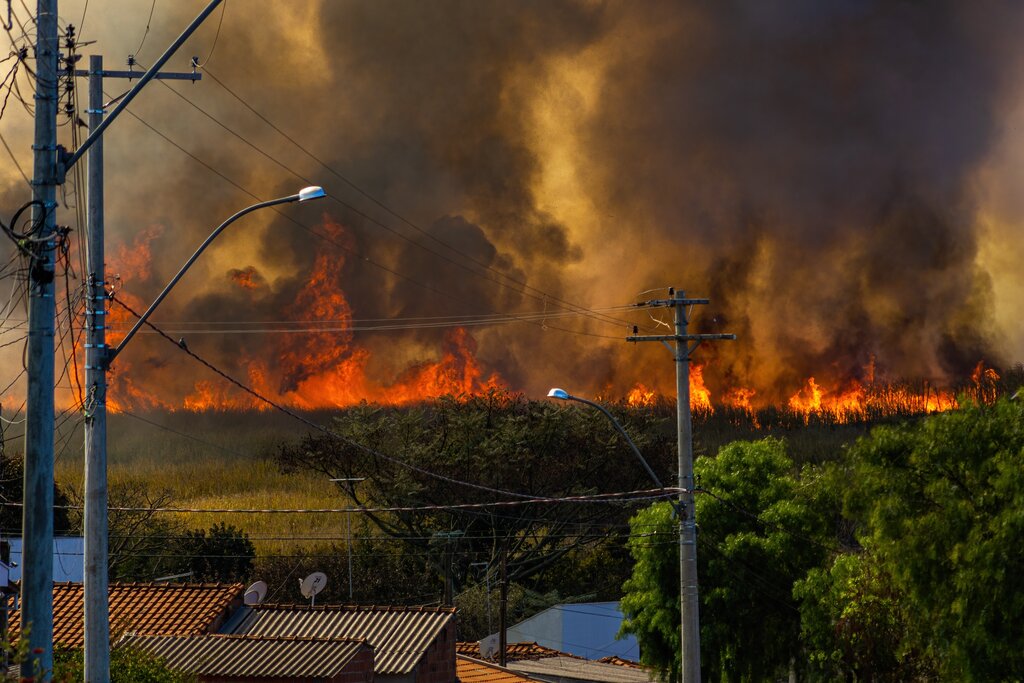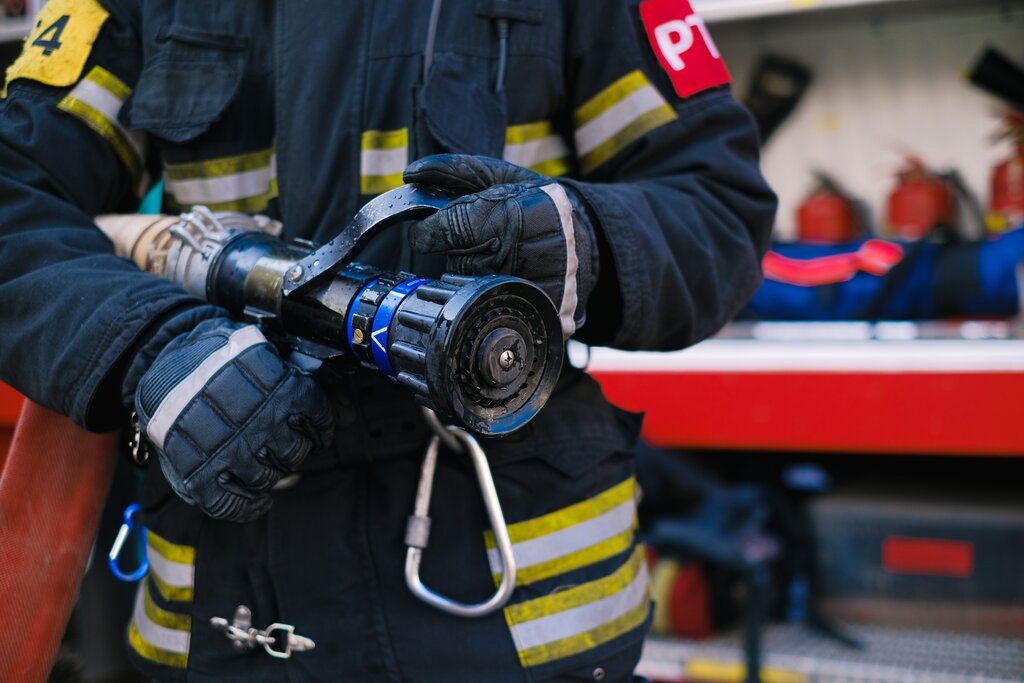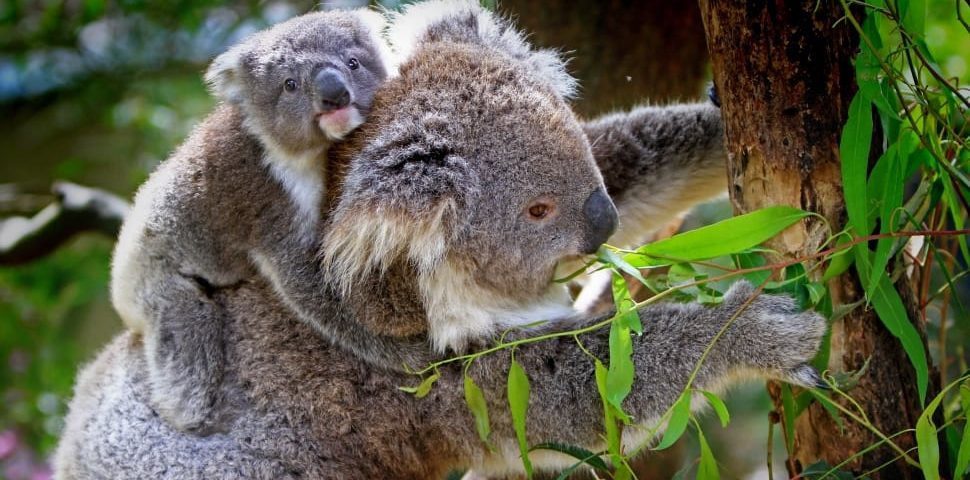
How Do Wildlife Populations
Recover from Devastating Fires?
One billion animals killed in Australian wildfires, including 25,000 koalas and perhaps millions of kangaroos.
The numbers boggle our minds and wrench our hearts.
Politicians and scientists alike question whether the Australian landscape will ever recover. Both groups have requested that koalas be declared “endangered.” At least six other species of rodents, marsupials, reptiles, amphibians and birds are also threatened with extinction since the horrific blazes Down Under.
Australia is home to between 600,000 to 700,000 species, many which are not found anywhere else on the planet. Biodiversity experts are alarmed at the sheer vastness of the scorched earth left in the fires’ wake.
Do the Numbers Help?
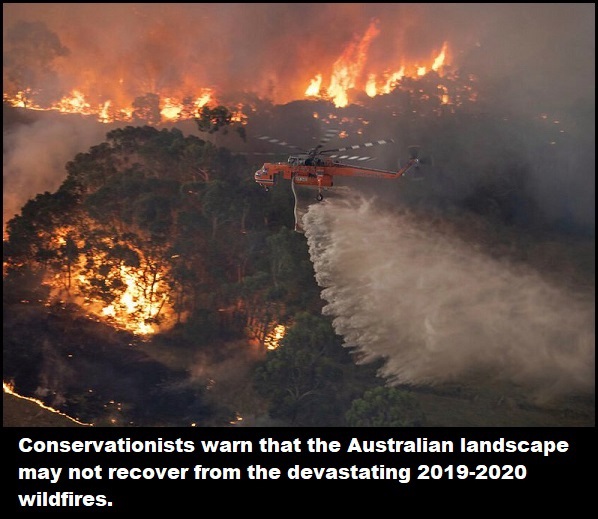
But experts caution that it’s impossible to know exactly how many animals have perished in the fires. Many of the figures ricocheting around the web depend on assumptions about existing population sizes and don’t consider the animals’ survival instinct.
For example, have 25,000 koalas really died? Where did that number come from?
The source appears to be Sam Mitchell, the co-owner of the Kangaroo Island Wildlife Park in Duncan, South Australia. Mitchell estimated that the total koala population before the fires was about 50,000, and that “probably more than half” of them could have perished in the fires. But he added that it was “a guessing game.”
Some experts wonder if the numbers are really helpful at all. Others have estimated koala losses between 5,000 and 10,000. Corey Bradshaw, an ecology fellow at Flinders University in South Australia, says it’s dangerous to share blanket numbers at this point because they’re “inestimable.”
According to Josey Sharrad of the International Fund for Animal Welfare, “Koalas are particularly vulnerable to bushfires, as they are slow moving and live in eucalyptus trees that burn quickly and intensely.”
So regardless of which figures are correct, they all represent an uphill battle ahead for this species, which was already close to being endangered before the 2019 fire season.
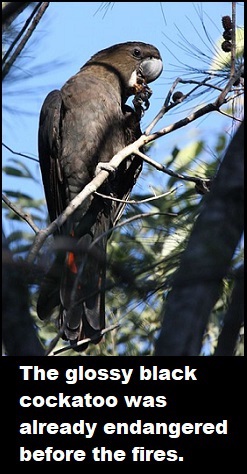
Wildlife Habitats Threatened
As heartbreaking as the actual numbers of dead animals might be, the real threat to a species in the aftermath of a wildfire is the destruction of its habitat.
And it’s not just koalas that are in danger.
The glossy black cockatoo, was already considered endangered, with only about 300 to 370 remaining on the island before the fires. Still, that count was more than double what it had been in the 1990s. With painstaking care and much hard work over two decades, conservationists had been able to recover the population to its pre-fire numbers.
The recent fires represent a huge setback to their efforts. Of course, the birds themselves were able to fly away from the danger. But providing a habitat that will ensure their continued survival is another story.
“We think somewhere between 50 to 60 percent of their habitat has been affected,” says Daniella Teixeira, a conservation biologist at the University of Queensland.
As wildlife gradually return to their homes, they may find that the resources that allowed earlier populations to thrive are no longer there. These effects are almost always temporary. So far, there have been no documented cases of even severe wildfires wiping out entire populations or species.
Remembering 1988 Yellowstone Fires
Various studies suggest that wildfires typically cause little direct mortality to large mobile animals, such as deer, bobcats, and bear.
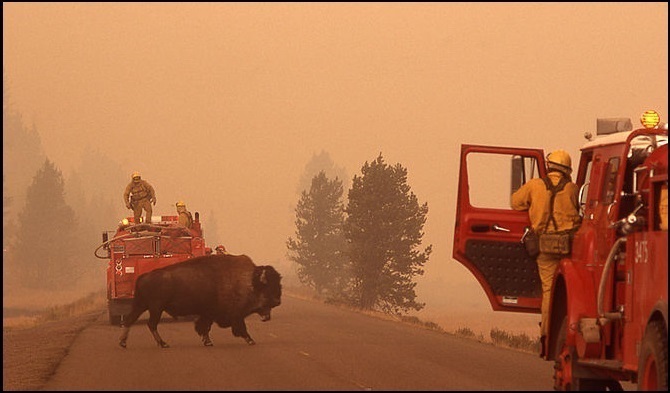
For instance, during the extensive 1988 wildfires at Yellowstone National Park, helicopter surveys revealed surprisingly few of deer and other large animals had perished in the flames. However, the winter survival of these species was affected by the charred rangelands.
How Quickly Do Wilderness Areas Recover?
For those species that have evolved to live with fire, the scenario is not so dire.
Animals typically rebound, according to Bradshaw, even from such severe devastation as Australia has recently experienced.
“We’re constantly surprised how quickly recovery happens after a fire, and how many animals survive,” he added.
In fact, wildlife begin to use wilderness areas immediately following a fire, often literally before the smoke clears. It’s not unusual to observe a wide variety of species, such as white-tailed deer, tortoises, snakes, and all manner of bird life returning to areas immediately following a fire.
Of course, the response of wildlife varies, depending on the size and severity of the wildfire. For the Australian fires, which burned out of control for months in high-fuel areas, some plant species may not recover. Which would mean the repopulation of wildlife at the burn sites could be reduced or delayed.
Often, a wildfire can serve as “reset button,” allowing an old forest to be reborn, says Patricia Kennedy, a wildlife biologist at Oregon State University. And “a lot of species require that reset.”
You Can Help
It’s easy to feel hopeless in the face of Australia’s devastation. But donating to one of the following reputable organizations can help:
–Article Continues Below–
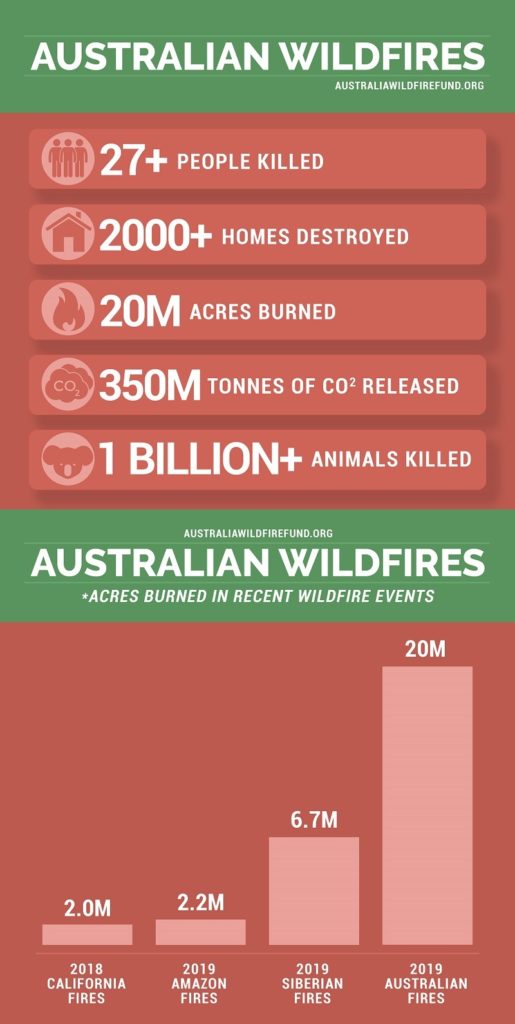
If You Find an Injured Animal
What should you do if you find a wild animal that was injured in a fire? Dr. Stephany Lewis, veterinarian at the California Wildlife Center, advises a hands-off approach, unless absolutely necessary. If you see animals that are injured or clearly compromised, call your local animal control or wildlife rehabilitator.
You may safely capture small animals, Lewis says, by throwing a towel or pillowcase over the injured animal and placing it a warm, quiet, safe spot, such as a box or crate. Then contact the nearest wildlife rehabilitation center. (The video on the left depicts an Australian woman who used the shirt off her back to rescue an injured koala.)
Lewis stresses the importance of calling animal control and minimizing contact with the animal, as they are very stressed by human presence. “Even if they don’t look like they’re frightened or they aren’t struggling to get away, they might just be in shock and unable to express that.”
If an Animal Is Seeking Refuge on Your Property
If an uninjured wild animal has found refuge in your yard, the best thing to do is leave him alone. Keep pets indoors and avoid the area. The animal will move on when he feels safe to do so.
Sources:
Featured Image: Creative Commons Photo, Public Domain
Chicago Tribune
National Geographic
University of Florida Extension
KCET Earth Focus
Audubon

